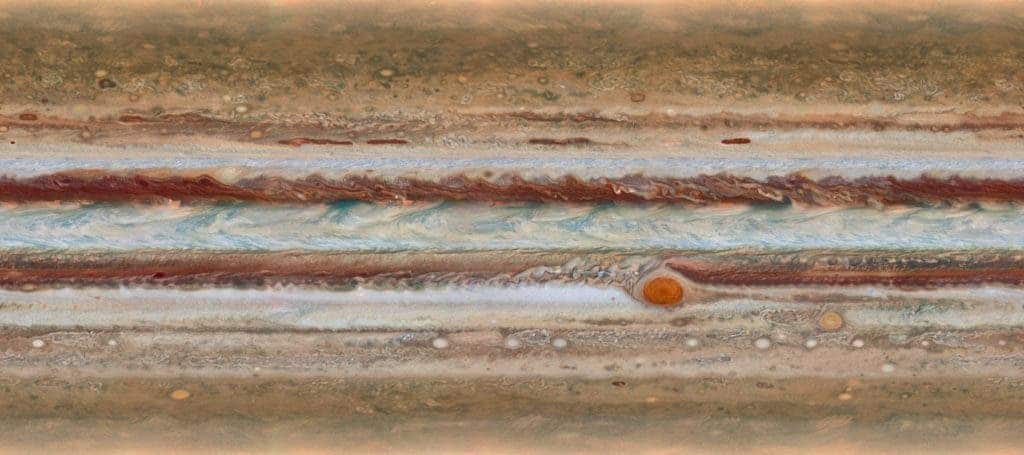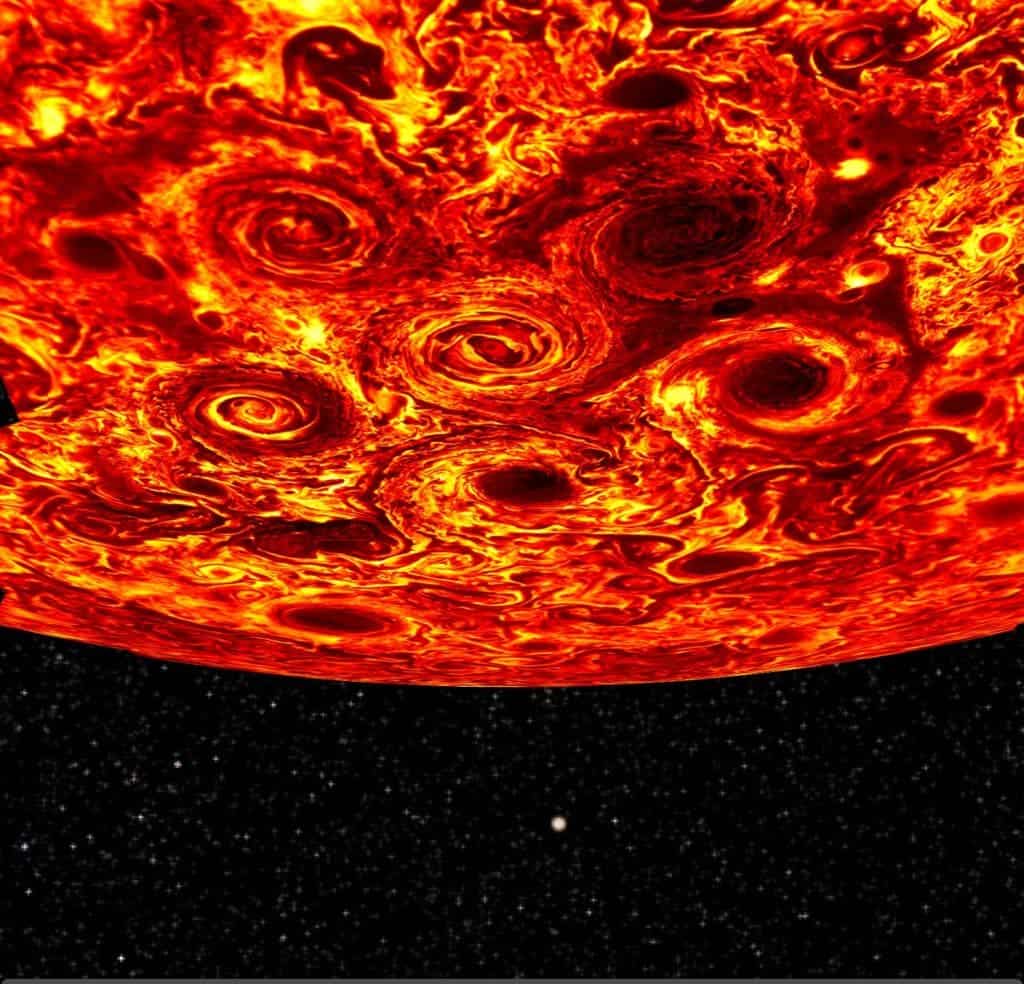A series of four papers using data from NASA’s Juno mission reveals intriguing information about Jupiter, including its gravitational field, its atmospheric flows, its interior composition and its polar cyclones.

When the Juno mission was successfully launched in 2011, astronomers worldwide were thrilled. The shuttle had the potential to reveal valuable information about Jupiter and its satellites — and that potential has been thoroughly fulfilled. The new papers are the latest in a long chain of remarkable findings about the most massive planet in our solar system, adding some much-needed pieces to the puzzle.
In the first paper, researchers led by Luciano Iess of the Sapienza University of Rome in Italy used Doppler data to study Jupiter’s gravitational field. The data allowed researchers to measure Juno’s velocity down to 0.01mm/s accuracy, even while the shuttle is traveling at speeds of up to 70 km/s in orbit.
Jupiter’s gravitational field is famously asymmetrical, which is unusual for fast-rotating and oblate (squashed at the poles) gas giants. This gravitational asymmetry is caused by hydrogen-rich gas is flowing asymmetrically deep in the planet, and Juno was able to study this process.

Credit: NASA/SWRI/JPL/ASI/INAF/IAPS
Two other papers looked at different physical parameters of Jupiter. A team led by Yohai Kaspi of the Weizmann Institute of Science in Israel used another asymmetry, that of Jupiter’s magnetic field, to calculate the depth of Jupiter’s atmosphere, finding that the mass of the atmosphere amounts for about 1% of the planet’s total mass. Meanwhile, Tristan Guillot and co-authors report that at depths greater than 3,000 kilometers below cloud level, Jupiter’s deep interior is made up of a fluid mixture of hydrogen and helium, rotating as a solid body. They also found that the speed of the above-mentioned winds extend some 3,000 km beneath the cloud level, dropping in intensity with altitude.
Even with all this information, we’re still just barely scratching the surface of what we know about Jupiter.
“We’re at the beginning of dissecting Jupiter,” says Juno mission leader Scott Bolton of the Southwest Research Institute in San Antonio.
However, there’s also a downside to the Juno mission: it offered so much valuable data that it’s gonna be very hard to top it. In an accompanying News&Views article, planetary scientist Jonathan Fortney of the University of California Santa Cruz praised the work, writing:
“The work demonstrated here is extremely robust,” Fortney wrote in his editorial. “I do not foresee another leap in knowledge on Jupiter’s interior after the Juno mission ends, unless astronomers are able to study the planet’s internal oscillations, as has been done for the Sun.”
Fortunately, Juno will remain in orbit for at least a couple of years, so we’ll certainly have more to learn about Jupiter.
Journal References:
- Measurement of Jupiter’s asymmetric gravity field. Corresponding Author: Luciano Iess (Sapienza Università di Roma, Rome, Italy). DOI: 10.1038/nature25776. http://nature.com/articles/doi:10.1038/nature25776
- Jupiter’s atmospheric jet streams extend thousands of kilometres deep. Corresponding Author: Yohai Kaspi (Weizmann Institute of Science, Rehovot, Israel). DOI: 10.1038/nature25793. http://nature.com/articles/doi:10.1038/nature25793
- A suppression of differential rotation in Jupiter’s deep interior. Corresponding Author: Tristan Guillot (Université Côte d’Azur, Nice, France). DOI: 10.1038/nature25775. http://nature.com/articles/doi:10.1038/nature25775
- Clusters of cyclones encircling Jupiter’s poles. Corresponding Author: Alberto Adriani (INAF-Istituto di Astrofisica e Planetologia Spaziali, Rome, Italy). DOI: 10.1038/nature25491. http://nature.com/articles/doi:10.1038/nature25491






